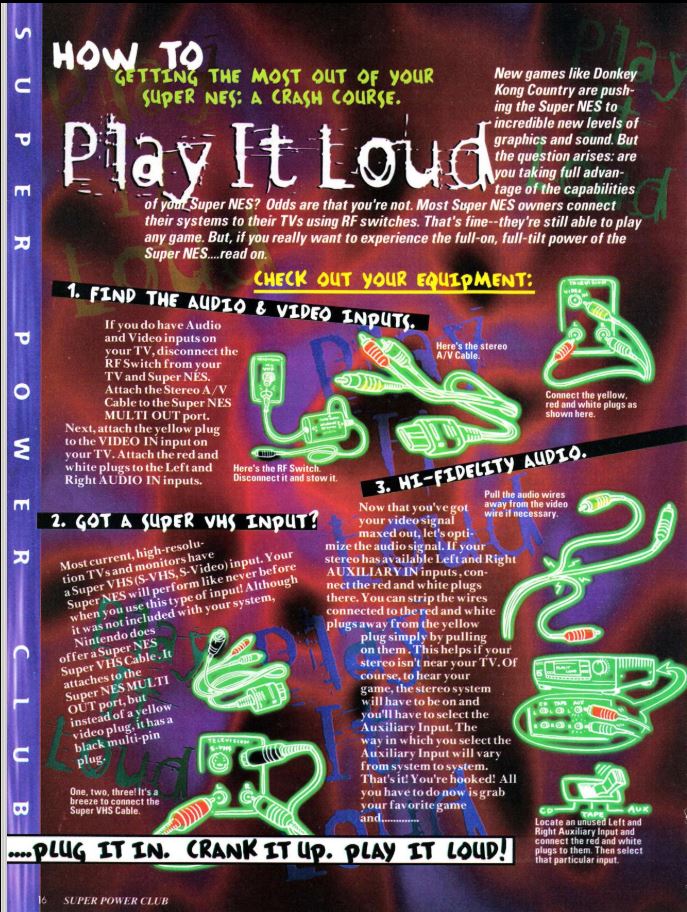I recently started collecting old Nintendo Power magazines (because I can’t help myself). I originally had a subscription from mid 2000 til the end. I got to enjoy some good years, but I feel like the REALLY good years were everything prior to me getting the magazines. Anyways, after thumbing through Vol 68 (January 1995) that I had recently acquired, I found this cool little excerpt and thought it was a perfect way to show where we were during that time compared to now.

Whenever I talk about this hobby with someone new, I inevitably have to explain what composite video is and why it isn’t good. I usually end up on RetroRGB looking at the guide so I can show off reference pictures. S-Video was something I barely got to experience growing up.
I had one CRT that I used (and still have) that accepted S-Video. During that time I didn’t understand S-Video and acquired a MadCatz branded cable or something similar. That cable was such crap I remember plugging it in having issues and throwing it back in the closet. I very much wish that I read this article back in the day. I would have had to beg my parents for the official cable. Once the 360 and PS3 came out I jumped straight into component cables and basically skipped S-Video until I got back into retro stuff and bought a S-video cable for my gamecube and one for my dreamcast that I used up until the HDMI mods were available.
I feel like S-Video never really got any love. A lot of my AV equipment supported it growing up, I just never used it back then. It is pretty cool that Nintendo at least tried to advertise it back then. I didn’t even know it existed, but hey I didn’t know about the Gamecube component cables either during that time. When I moved into my house, my first solution was to get a composite to hdmi converter off Amazon and I bought an S-Video cable for my Nintendo consoles. The S-Video didn’t work with that converter, so I started researching, discovered HD Retrovision, then RetroRGB and here we are.
It is a pretty nice time to be a retro enthusiast. There are so many options and solutions available each year. It’s crazy how fast this hobby is growing in a short time. Cool to see where we came from to where we are now. Looking forward to whatever comes next!
If you are new to RetroRGB and want to get the best out of your original SNES console check out this page:
https://www.retrorgb.com/snes.html
Auto Amazon Links: No products found. http_request_failed: A valid URL was not provided. URL: https://ws-na.amazon-adsystem.com/widgets/q?SearchIndex=All&multipageStart=0&multipageCount=20&Operation=GetResults&Keywords=B07H3F94ZN|B07TL6L7MY|B07H3F6WYT&InstanceId=0&TemplateId=MobileSearchResults&ServiceVersion=20070822&MarketPlace=US Cache: AAL_c27e563c3c0e8551e11b6c716959a4ff
Update: Looks like 3rd party magazines in the 90’s were recommending RGB, but not officially Sega:
RGB was highly recommended in magazines in 1991. Also, GAMEFAN used RGB for all of their amazing screenshots.
MEGA PLAY MAGAZINE
MAY/JUNE 1991
p.10https://t.co/Ra0ZQaCOc7 pic.twitter.com/4W0BTOsaWQ— Joseph KG (@polynektar) November 13, 2019
